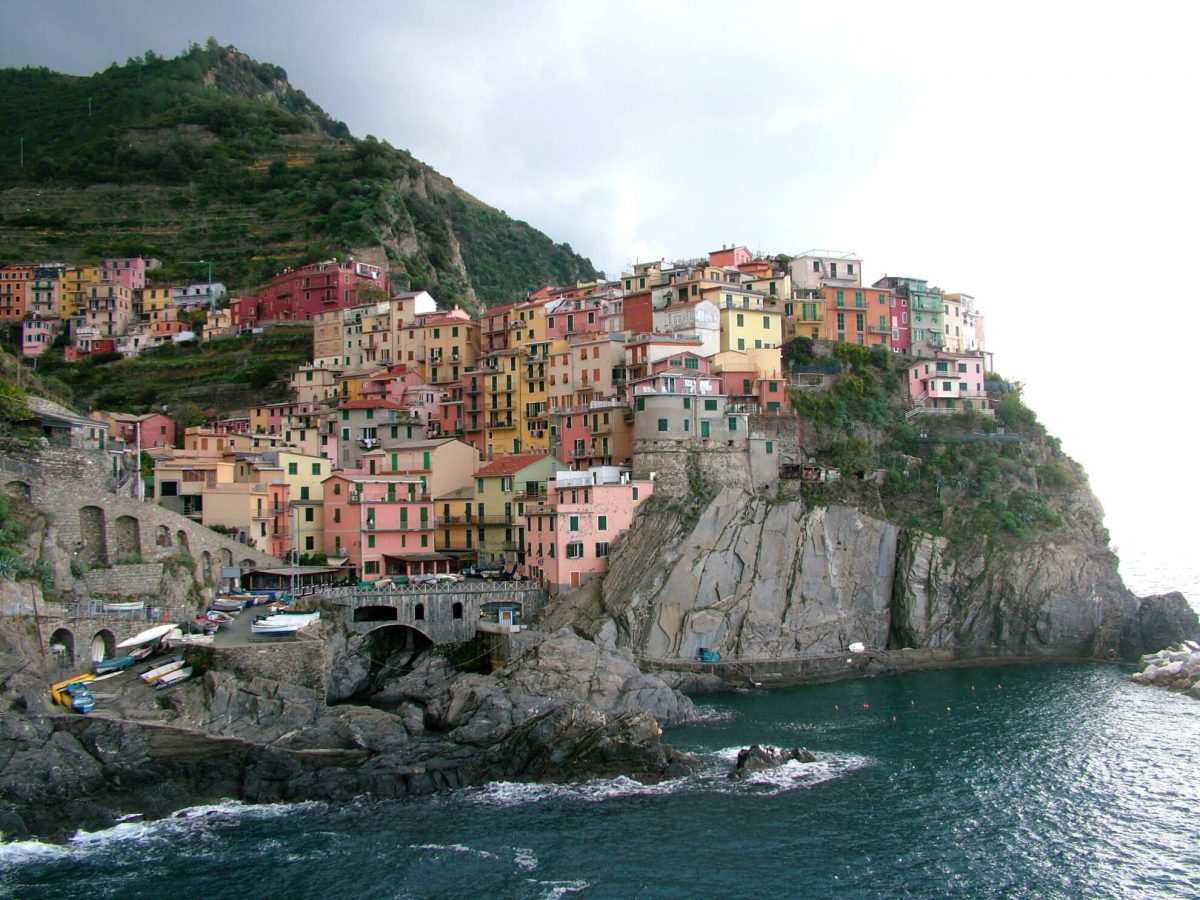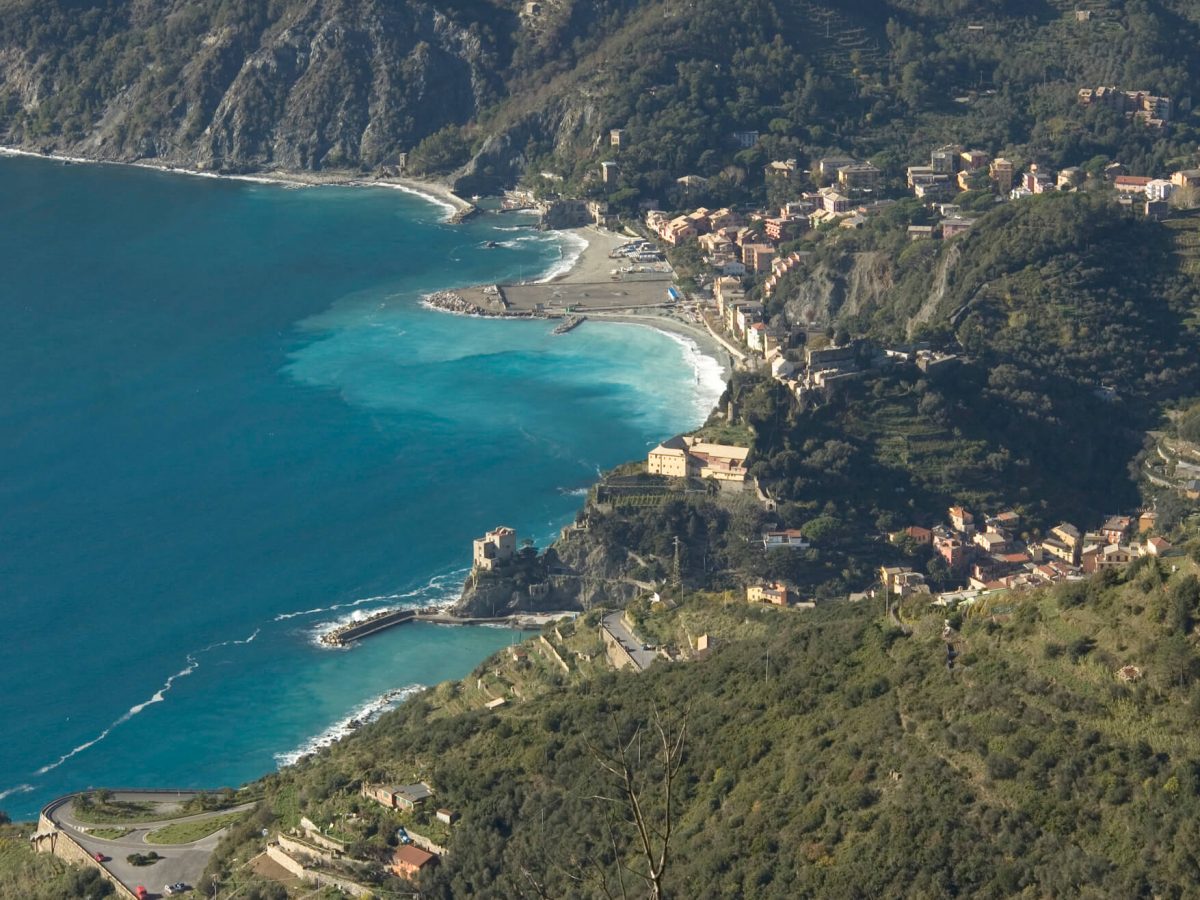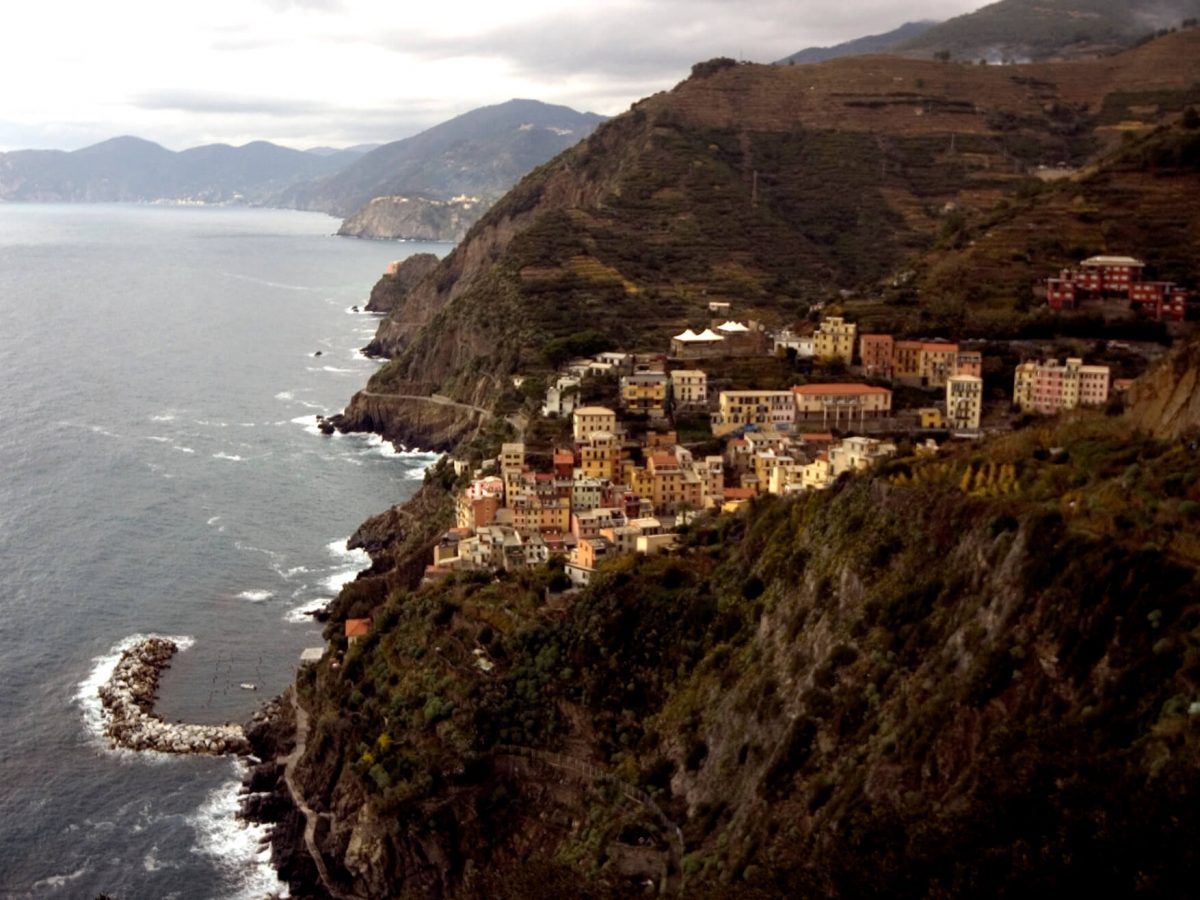Stretching 15 km along the eastern Ligurian coast between Levanto and La Spezia, the jagged, steep coastal landscape has over centuries been intensively developed with stone walled terraces for the growing of vines and olive trees. The area was almost inaccessible, except by sea, until the Genoa-La Spezia railway was built in the 1870s.
The property, extending from the Punta Mesco in the west and to the Punta Persico in the east, encompasses the territory of Porto Venere, the three islands of its archipelago (Palmaria, Tino and Tinetto), and the Cinque Terre, the collective name of the five villages of Monterosso, Vernazza, Corniglia, Manarola and Riomaggiore.
Some of the cultivation terraces extend to as much as 2 km in length. Terraces extended along the steep slopes from a few meters above sea level to up 400 m a.s.l., the highest altitude suitable for cultivation. They were mostly built in the 12th century, when Saracen raids from the sea had come to an end. The drystone walls are most often carefully constructed of sandstone rough blocks, bonded together with pebbles removed from the ground.
The maintenance of the terraces and the cultivation of vines and olive trees on the terraces reflect a communal approach to farming and the collaboration and cooperation of the communities without which such cultivation would not have been possible.
The natural garrigue and maquis vegetation survives intact in the higher parts of the steep ridge. The nature of the terrain and the vegetation provides food and shelter for a wide range of insect and animal species.
The local communities have adapted themselves to this seemingly rough and inhospitable environment by living in compact settlements on the coast or in small hamlets on the hillsides (e.g. Volastra, Groppo, Drignana, San Bernardino or Campiglia), erected directly on the rock with winding streets. The general use of natural stone for roofing gives these settlements a characteristic appearance. They are generally grouped around religious buildings or medieval castles. The terraces are also dotted by innumerable tiny stone huts isolated or grouped together (e.g. at Fossola, Tramonti, Monestiroli or Schiara) used for temporary shelter during the harvest.
The main five villages of Cinque Terre date back to the later Middle Ages. Starting from the north-west, the first is the fortified centre of Monterosso al Mare, that is a coastal town grown along two short valleys and facing one of the few beaches that exist in the area. Vernazza has developed along the Vernazzola water-stream on the slopes of the rocky spur protecting the village from the sea. Corniglia is the only village which has not been built on the coast itself but on a high promontory projecting to the sea. Manarola is a small hamlet in which the houses are ranged in part on a rocky spur running down towards the sea and partly along the Grappa stream. The most eastern – southerly village is Riomaggiore; its houses line the narrow valley of the Rio Maggiore water-stream, today covered to be used as main street.
Portovenere was an important commercial and cultural centre dating back to the Roman period, from which archaeological remains survive in its vicinity. It is compact in form, the houses aligned along the coastline culminating in the Doria Castle, which dominates the settlement and is a historical palimpsest, with many traces of its medieval predecessor.
Off the coast at Portovenere, the three islands of Palmaria, Tino and Tinetto, noteworthy not only for their natural beauty but also for the many remains of early monastic establishments that they contain.
The rugged and visually dramatic coastal landscape, with its tall compact settlements and visually spectacular terraces that were shaped over almost a millennium, is an exceptional testimony to the way traditional communities interacted and still interact with their difficult and isolated environment to produce a sustainable livelihood.




